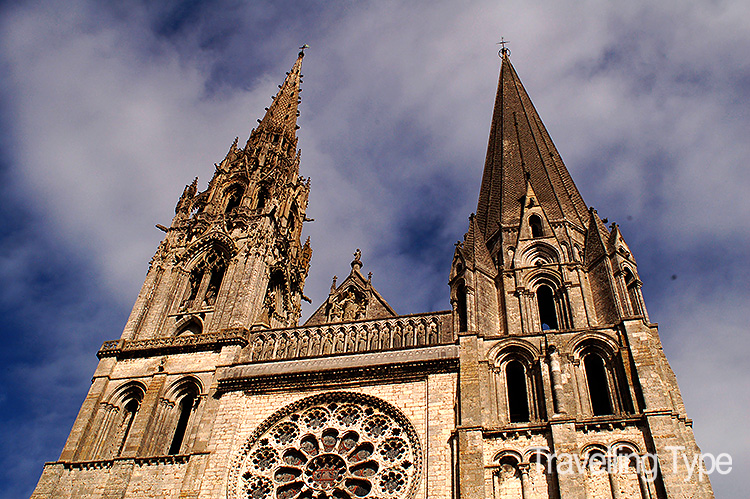
Speeding on a train from Paris, I was headed toward what’s been a place of communion for travellers since the 12th century. Tall skinny ones (like me), round ones, grumpy ones, happy ones and more often today, secular ones too. Being a traveller myself, I felt an urge to head to this old adventurer’s den at the Chartres Cathedral in Chartres, roughly 100 kilometres south-west of Paris.
Chartres Cathedral, however, is much more than a traveller’s conclave. It’s a Roman Rite Catholic cathedral that’s one of the finest examples of French Gothic architecture in the world. It’s also a UNESCO World Heritage Site, and if you’ve ever been fortunate to wander within its intricate and imposing walls, you’ll know why.
Built between 1194 and 1250, the cathedral has long been a magnet for Christian pilgrims, as it houses a most sacred relic known as the Sancta Camisa – a tunic believed to have been worn by the Virgin Mary at Christ’s birth. The cathedral, it’s believed, acquired the cloth in the early 9th century, although it wasn’t until the 12th century that it became an important marker for pilgrims.
Today, the more secular traveller like myself heads to Chartres Cathedral to take in the architecture and discover another slice of French history, hidden behind stone walls. Arriving as I did mid-morning, I met a fellow traveller and old friend, and together we launched into this architectural time capsule as pilgrims of the 21st century.
Wandering beneath the towering, intricately carved ceilings, it all seemed a bit strange. I was at a loss as to how builders could manage such a feat. Spreading out from the ceiling sides were ridges that converged into fish-like patterns along the cavernous, hallowed halls. Light sprayed through the stained glass windows and portals, creating shadows that accentuated this masterful handiwork.
The window sills throughout the Chartre Cathedral have a “three-part elevation with external buttressing”, designed to accommodate the whopping stained glass found throughout the structure. In all, the cathedral contains 176 of these dense, chromatic beauties, which create a dark, but colourfully hued interior. The styles and types are numerous, detailed, rich in symbolism, and deserve a lengthy blog post of their own.
Wandering about, I came across another pilgrim, more pious than myself, kneeling and praying before Our Lady of the Pillar (above). This is a 14th century statue of Mary and her child, venerated by many who visit. Here, with the chandeliers, candles, flowers, pedestal, ornamental mastery and robed devotee, I felt I’d been transported back in time.
I also felt fortunate to witness such a vivid slice of history, particularly since Chartres Cathedral narrowly escaped a beastly blast during the French Revolution, and a blasphemous bombing during WWII. The place, it appears, is waiting for the next generation of travellers. It’s an enduring testament to medieval times.


